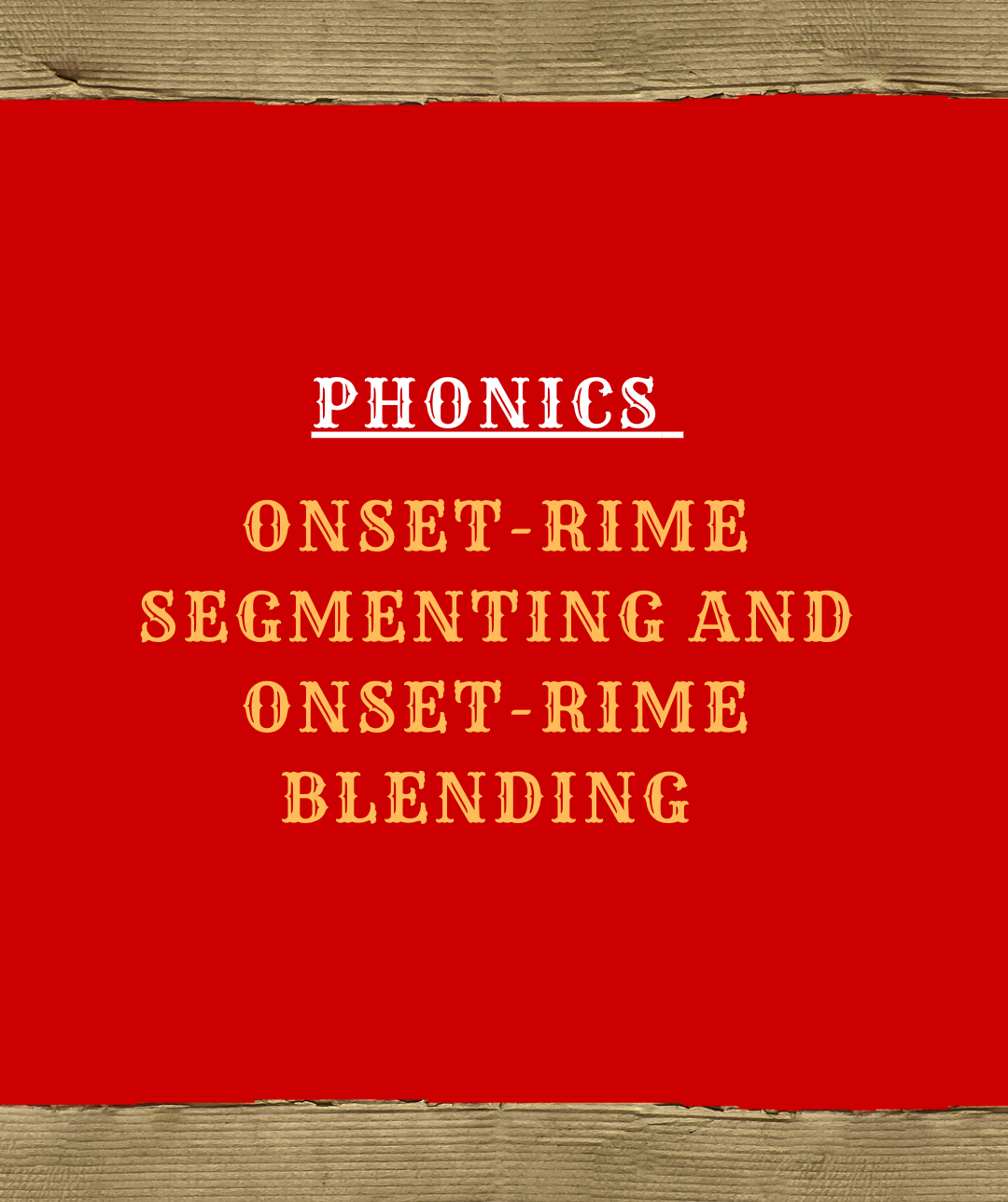Onset-Rime Segmenting and Onset-Rime Blending Are Critical for Your Kids' Reading Development
This is the next blog in my series of Phonological and Phonemic Awareness skills. I hope you are enjoying these or at least learning something!
They say children are like sponges; they absorb everything around them, learning new skills daily. However, when it comes to your kids’ phonetic and literacy abilities, you should not miss out on teaching them about onset and rime. Also, teaching them about onset-rime segmentation and blending will help them with reading and spelling immensely.
Why are onset and rime important?
Teaching your kids about onset and rime will improve their phonological awareness and skills by helping them get to know word families. Phonetical understanding is fundamental. It is a skill that allows children to decode new words while reading them. Additionally, the skill allows your child to spell easier when writing.
Once your kids understand onset, rime, they build awareness of common word parts, which is the best foundation to begin automaticity in decoding. Blending and segmenting by onset and rime are the basics for advanced phonics exercises, such as mixing and segmenting by phoneme.
Teaching your child about onset and rime will:
- Help them learn about word families and develop emergent spelling skills.
- Help their literacy skills.
- Help their reading and spelling acquisition. Now that I’ve listed the critical benefits of teaching onset and rime let’s look at the pure definition.
Onsets and rimes are phonological units of a spoken syllable, typically split in two – the onset and the rime. Onset is the initial phonological part of any word, consisting of the initial consonant or consonant blend. Rime is the string of letters that follow the onset, consisting of a vowel and any final consonants. However, not all words have onsets.
What is onset-rime segmentation?
Segmenting means breaking words into two parts – the onset and the rime. The onset is either a consonant or cluster of them at the start of a syllable, while the rime is its remainder. So, for an onset and rime example, let’s look at CLIMB – cl- is the onset, while -IMB is the rime.
Why is teaching segmenting and blending important for learning to read?
Segmentation by itself, or better yet in combination with blending, is a valuable skill that will majorly help your kids’ reading development.
Practicing sounding out words, combining sounds, and separating them are necessary for learning how to read. This has been backed up by science. Lots of studies prove that children with weak phonological awareness also develop weak reading skills. Here, you can learn more about the importance of phonological awareness and letter knowledge for children’s reading skills.
Young kids typically get their first sense of blending through simple rhyming. Rhyming is blending a new onset to a rime.
How can you exercise this with your kids? Listening to rhyming stories, poetry, or songs is an excellent way to go about practicing blending.
The Takeaway
Young children who can segment and blend sounds with ease are later much better at reading and spelling. Those are phonological skills needed for a better understanding of the written word and writing itself. So, make sure you practice with your kids as much as you can. The most important benefit is not the fact that they will learn to understand better, but also express themselves better.
Dr. Kim Southwell





